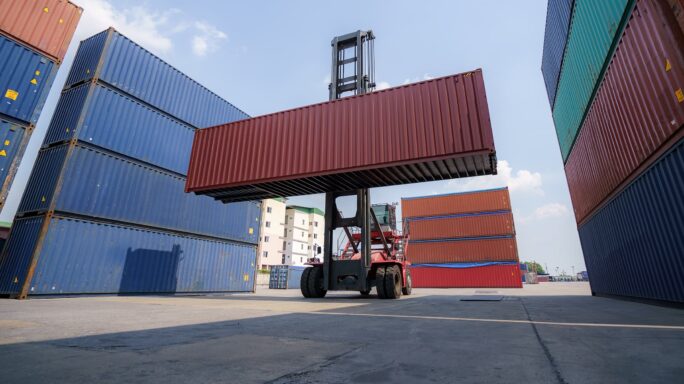Why manufacturers should consider moving from supply chains to supply networks

The coronavirus (COVID-19) pandemics brought home to manufacturers the fact that modern supply chains are exceptionally efficient, but also lacking in resilience.
Incredibly, 200 of the Fortune Global 500 firms have a presence in Wuhan, the epicentre of the epidemic. A lockdown in that one city alone therefore disrupted the supply chains of 40% of the world’s leading businesses.
And they’re not alone.
As business has concentrated on value – shaving costs – over the past decade (particularly as post-financial-crash austerity made cost-cutting a priority), there’s been every incentive to buy materials and parts as cheaply as possible from an unlimited global range of sources.
Distance has been no object, provided the price is right. Even for small and medium-sized enterprise (SME) manufacturers, supply chains often extend across the globe.
How linear supply chains can be beneficial
The next temptation is to cut costs further by buying from single sources, particularly if they are cheap. This is forgivable. Dawson Consulting reports that, as well as cutting costs, the linear supply chain has plenty of other benefits:
- You’ll build strong relationships with an individual supplier – they are more likely to be loyal and it’s easier to maintain
- You’ll improve just-in-time processes with less complexity and lower stock holdings
- You’re likely to benefit from volume pricing
Shortcomings of linear supply chains
The downside, of course, is that a disruption such as coronavirus can bring production lines to a grinding halt in a matter of days.
The World Economic Forum writes: “The impact of China’s lockdown and its dominance in key areas of manufacturing have further highlighted the problem with modern supply chains.
“When Chinese factories closed, manufacturers struggled to pivot due to a lack of flexibility in their supplier base… Multinational companies such as Apple, Alphabet, Starbucks, McDonald’s, and Proctor and Gamble have closed production facilities, offices, and restaurants across China.”
What to consider when adopting a supply network
Clearly, it’s time for businesses to broaden their supply chains. Here’s how to grow towards a supply network:
1. Look elsewhere
Unsurprisingly, China can no longer be ‘the only game in town’.
The World Economic Forum suggests that “manufacturing hubs such as Vietnam, Mexico, and India” will be the likely beneficiaries of a wider perspective.
Deloitte, the consultancy, also points to Chile and Brazil as strong emerging options.
2. Look nearby
The answer may be closer than you think.
Deloitte again: “There may be opportunities within the ecosystem including establishing shared resource pools for raw materials inventory, which is an approach that large companies in China have used in the past in times of crisis.”
3. Consider business to business (B2B) marketplaces
Your next supplier may be waiting for you online.
Alibaba (now by no means exclusively Chinese-focused) is a world leader but there are many alternatives. Tradeshift, in particular, comes with a host of third-party integrations.
Tradeix’s Marco Polo platform, meanwhile, promises even the smallest SME access to fulfilment tools, which will make supply chain management accessible to all.
Raconteur reports: “A platform gives enterprises the ability to see far beyond their own walls.
“It becomes possible to receive automatic updates from suppliers, stockists, logistics partners and financial service providers all within a single environment… The best platforms offer a global community of users.”
4. Question your suppliers about more than product quality
How will you be treated if they face delivery problems? How resilient are they, further up the chain?
Deloitte again: “Embrace new digital approaches to illuminate the supplier network to gain visibility to critical component supply as quickly as possible.”
5. Be proactive – and spend a little
Morris Cohen is co-director of the Fishman-Davidson Center for Service and Operations Management at the Wharton School of Business.
He says: “If you want to be prepared for the occurrence of a random risk, then you have to make investments and decisions upfront, before the event.”
We might be too late for coronavirus but the lesson is there – risk mitigation is in every business owner’s hands.
6. Buy local
As well as diversifying your supply chain, you may wish to shorten it.
Cohen’s colleague, Marshall Fisher, says: “Are people going to hit the pause button on globalisation? That was already happening for a number of reasons, including the tariffs and trade wars with China and other regions, and Brexit.
“Trade disruptions are already causing companies to have to rethink how they approach globalisation and basically do less of it.”
Consultant McKinsey adds: “The state-owned Development Bank of Japan is planning to subsidise companies’ relocation back to Japan, and some western countries, including France, are looking to build up domestic industries for critical products, such as pharmaceuticals.”
Across the west, there is a clear political imperative to bring trade back home.
Final thoughts
There will always be a conflict between cost and resilience. Today, the balance is firmly returning towards resilience.
It’s perfectly expressed by Robert O’Sullivan, CFO, Europe, VP Finance for the food giant, Kellogg’s Europe, in a report for consultancy EY.
He says: “In recent years, outside of people and food safety, which will always be the main priority, businesses such as ours have looked at their supply chains primarily through the lens of cost as an enabler to margin expansion.
“Post-COVID-19, there will be an additional lens front and centre: resiliency.
“The challenge will be to find the right balance between the two. Those with a resilient supply chain have seen huge competitive advantage in the recent period of COVID-19, and I think this will continue in the longer term.”
The advice is clear: it will cost a little more to diversify a supply chain, but in uncertain times, every manufacturer should have backup options.
Coronavirus and your business
We’ve gathered information and resources to help navigate this situation, including tools and webinars, to help you understand what financial support is available.






Ask the author a question or share your advice